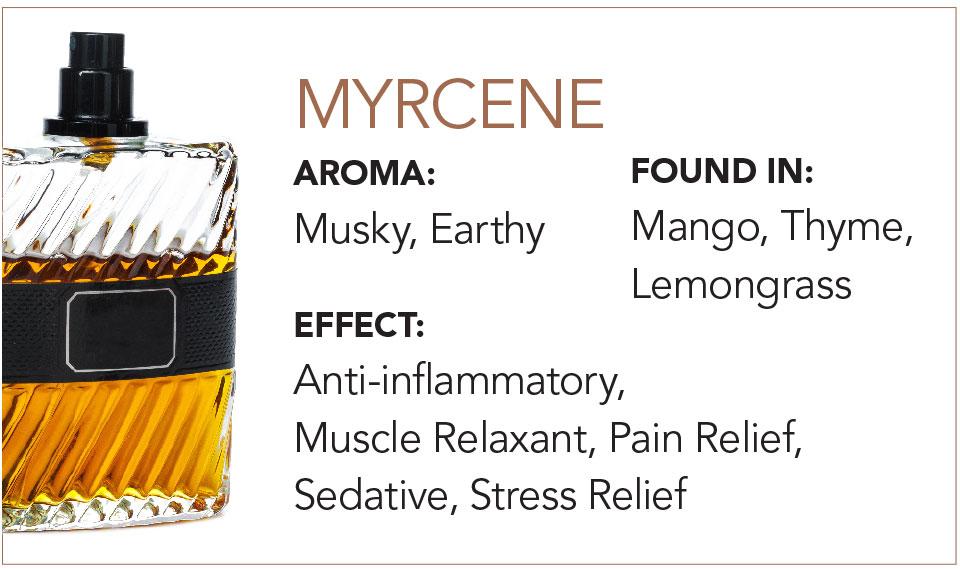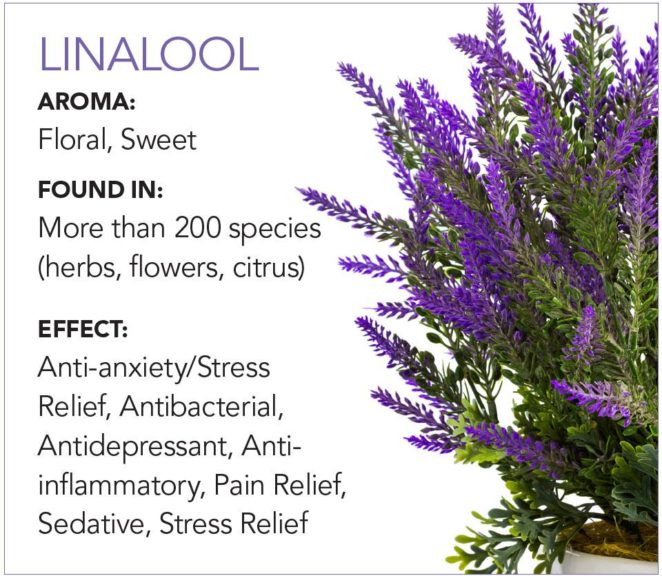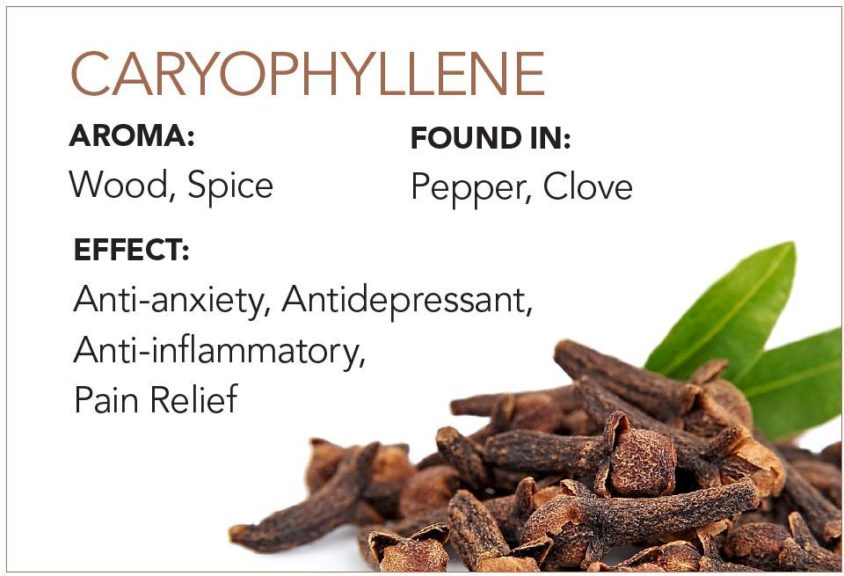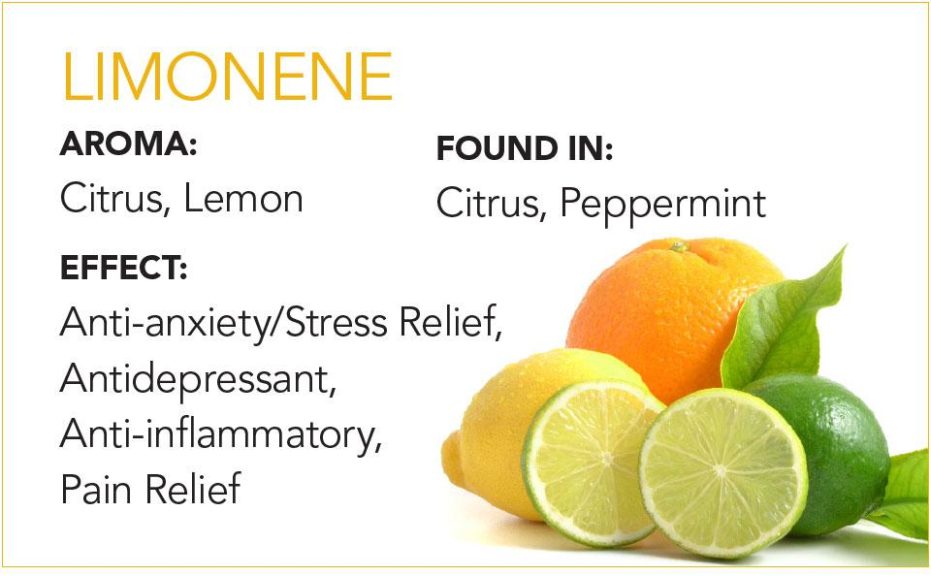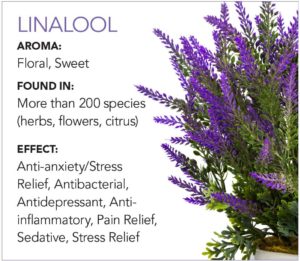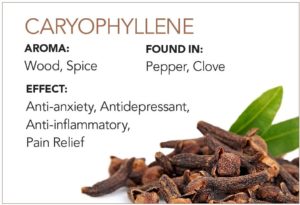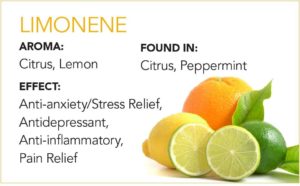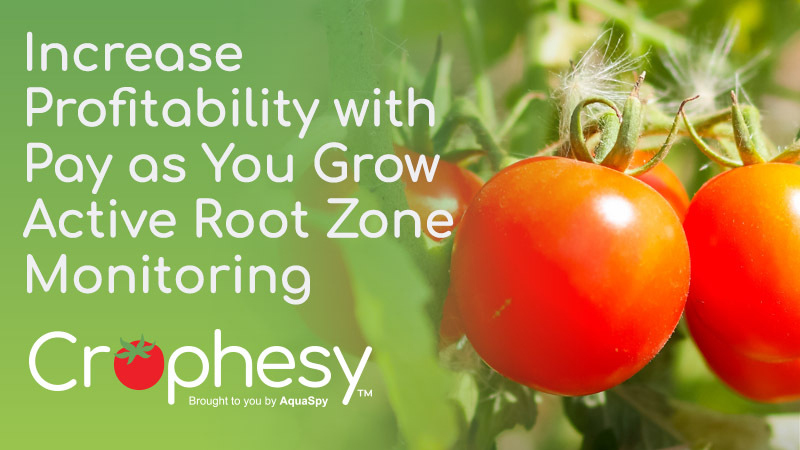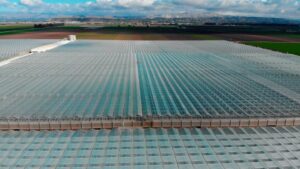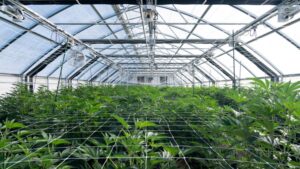Cannabis Terpenes: What Growers Need to Know (with Slideshow)
Terpenes – the naturally occurring substances that give sparkly cannabis flowers (and many other plants) their intense smell and flavor profiles (plus boosting psychological effects) – are enjoying a bit of a heightened profile of late.
Consumers who used to solely scout online dispensary menus for the highest THC percentages possible are becoming more discerning, hunting different levels and combinations of terpenes that influence the all-around consumption experience. This trend has naturally made its way into the greenhouse, where growers must now ensure production practices not only drive high THC and other cannabinoid production, but also the terpene content that today’s legal cannabis consumer is increasingly seeking out.
But, borrowing a phrase from the estimable LL Cool J (google him, Millennials), “don’t call it a comeback, terpenes have been here for years.”
Terpene Basics for Growers
“There’s no witchcraft to it or anything like that. It’s just kind of the whole combination of light and having the right genetics,” Solaris Farms owner Mike Sassano explains. “And nutrients are key as well, adding the right nutrients at the right timing, and then making sure you boost your terpene development toward the end of the process right around harvest time.”
First and foremost is choosing the right genetics for the level of terpene production one is seeking. Certain strains have higher levels and combinations of terpenes. Looking closely at that section of any Certificate of Analysis (COA) and making sure you trust the testing data is accurate is crucial during the strain selection process.
Then, and he may be a bit biased here, but having a greenhouse that lets in an abundance of natural sunlight – many in the industry believe sunlight is a big driver of natural terpene production within the plant than LEDs or HPS light sources – is ideal in turning out terpene-rich cannabis, Sassano says.
Sassano also deploys a specialty product near the end of his plant’s life cycle to “really blow up those terpenes” just prior to a harvest.
The product, called “Terpinator,” is a fertilizer additive that claims improved terpene concentration when used.
“It’s a very specific additive that we use in our irrigation toward the end of flowering,” he explains. “It’s basically drawing out those terpenes at the very end and kind of ensuring your final flower is filled with terpenes. We use a multitude of these types of products, depending on the genetics we’re producing at the time.”
Harvest SOPs Matter
Once the plant is cut down and headed to the cure room, the focus on terpene development doesn’t end there.
“As soon as you chop that plant down, the plant starts dying and the clock is ticking on those terps,” Sassano says. “It goes to reason that, just like any food crop, the colder you keep the harvested flower, the more you’ll slow down that degradation.”
At Solaris Farms (No. 16 on Greenhouse Grower magazine’s Cannabis Top 20 list), the Las Vegas-based greenhouse operation has customized its post-harvest processes to ensure its flower is still as terpene-rich as possible when it hits the dispensary shelf.
“With buds, or finished flower, it can be difficult because you can’t freeze those buds,” he explains. “What we do is, and I am not saying this is the best or only way, but we hang the buds upside down to cure and we take off all of the big fan leaves.”
By doing this, according to Sassano, the plant becomes stressed and “we more or less are letting it go into shock.”
“That sends all of the terpenes and cannabinoids and everything into those buds to protect them (from stress),” he adds. “Then we’ll hang them in the dry rooms, that process takes about five to seven days.”
Curing cannabis inside a structure, year-round, in Las Vegas, where temps in the mid-summer can easily average triple digits for weeks straight, is another difficulty Solaris must overcome.
“We keep our dry rooms chilled to under 68°F, and to get it below that in the Nevada desert heat, we have trouble trying to cool our rooms to far below that,” Sassano says. “The colder you can get into the mid-60s during that drying process, the better.”
Extraction Market Changes Things a Bit
Concentrated cannabis products deliver a significantly higher percentage of THC and CBD (hence the name concentrate) by volume than finished flower. Generally speaking, the top-shelf flower at any legal cannabis dispensary will heavily feature product testing at 30% THC or higher, while concentrated products like distillate and super-critical “diamonds” or “sauce” can come in at 80% THC content and higher.
Where concentrated products don’t measure up to finished flower is typically in terpene content, as butane and CO2-based extraction methods are known to effectively strip out the terpenes in an effort to leave behind only THCa.
“If you go with hydrocarbon (extraction process), you can get the full spectrum out of the flower and still keep those terpenes in there,” Sassano says.
Another interesting new practice is extracting exclusively for both terpenes and THC, and then combining the two pure isolates in different formulations.
“You pull all of those terpenes out first and then you can take all that biomass and extract that for the THC or whatever cannabinoid you’re wanting to pull out,” he explains. “You’ve now isolated the pure THC and the pure terpenes separately, now you pretty much have full flexibility to formulate whatever you want.”
Future of Terpenes Already Here
With the full flexibility from having extracted terpenes in a separate isolate, there’s yet another growing cannabis industry segment one can conceivably serve: terpene-infused products.
“The post process of infusing terpenes into things like pre rolls and vape cartridges is huge right now, at least it is here in Vegas,” Sassano explains. “You can do it for taste and smell and a premium consumption experience, or you can do it to enhance the medicinal effects of these products.”
Want to highlight some grape smelling or tasting notes in a pre-roll? Maybe that pre roll or vape cart is full of extract from a strain with “purple” in the name, and you really want to emphasize those grape soda-like taste and smell notes that cannabis consumers love?
Or, maybe you’re targeting a certain demographic that uses cannabis to get to sleep faster and more comfortably? You can add some pure myrcene and linalool isolate, as both of those terpenes boast sedative effects when consumed alongside THC (this is the ‘Entourage Effect’).
“You’re enhancing the experiential or medicinal aspects of the product, and I think that’s a really exciting, specialized niche that growers can almost differentiate themselves from other local growers or cannabis brands by serving that more sophisticated cannabis consumer,” Sassano says.
EDITOR’s NOTE: Be sure to check out our June 2020 issue of Greenhouse Grower Magazine for a handy terpene chart, as well as our cover story feature on North America’s largest greenhouse cannabis operation. Want to learn more about terpenes? Head on over to Leafly.com’s Cannabis 101 blog and check out this post.





